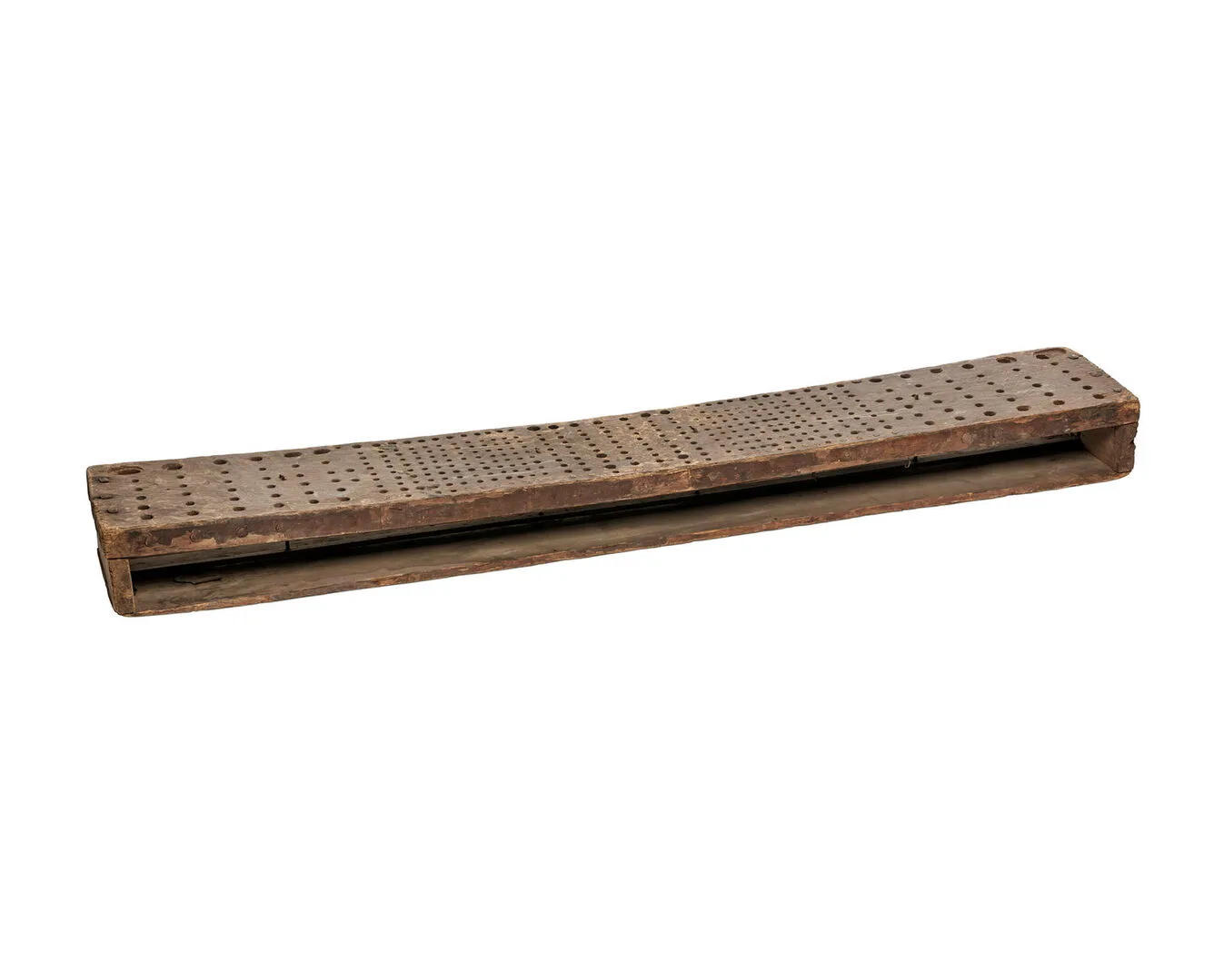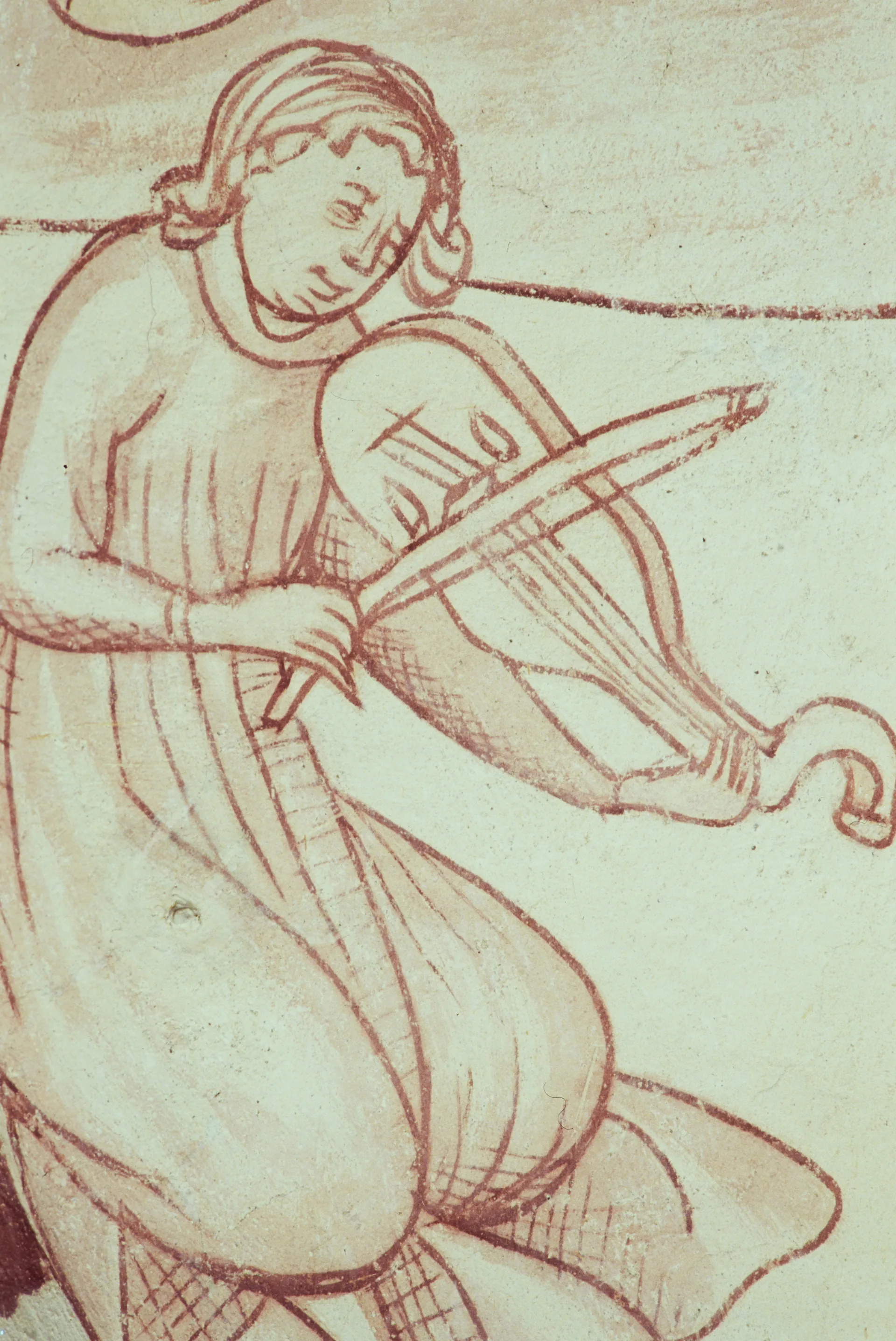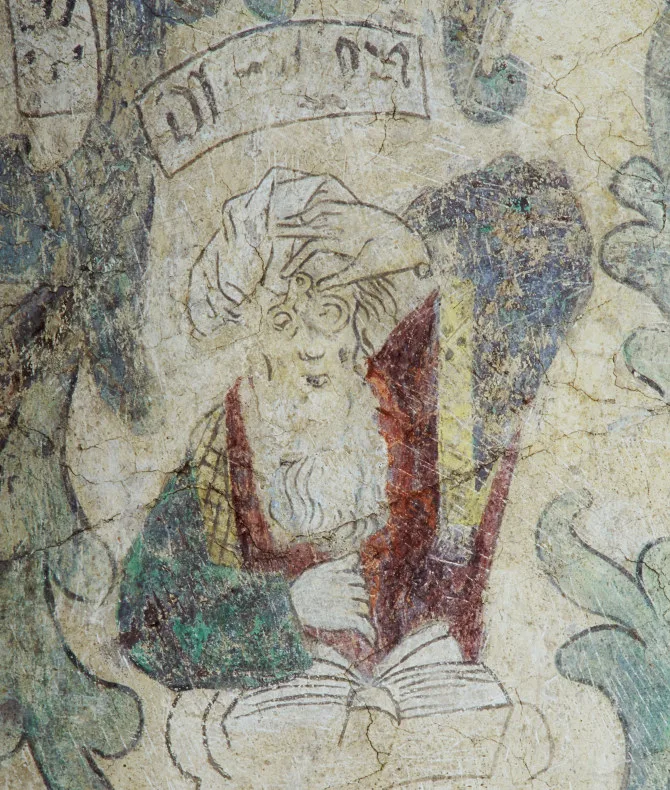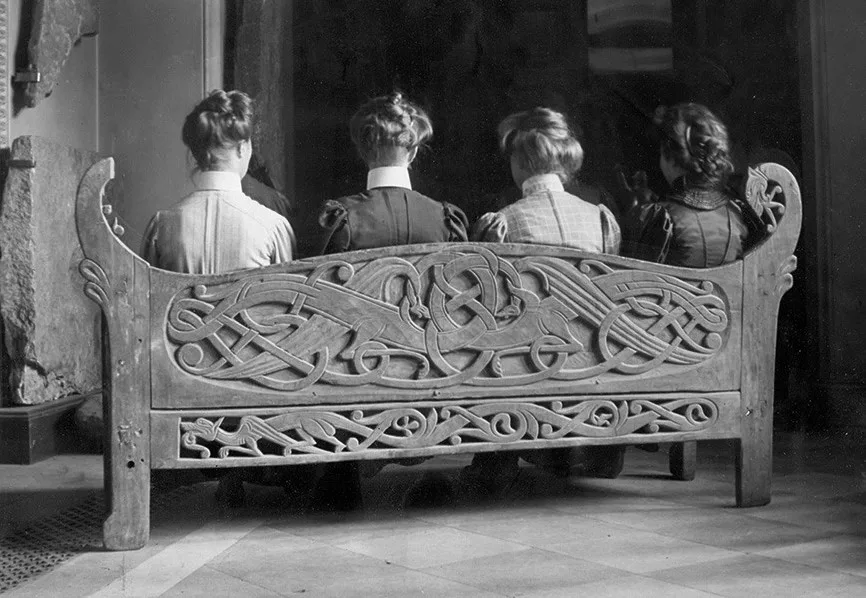The world’s oldest organ
Viking Age
AD 800 – AD 1100
Middle Ages
AD 1050 – AD 1520
Modern Age
AD 1520 – AD 2025
Music was important to medieval people, and the organs help us to understand how medieval instruments were built and how they may have sounded in churches. Organs, and parts of organs, from the 14th and 15th centuries have been preserved. They come from several churches on Gotland and retain their original painting, though they can no longer be played. At the museum there is also a newly built reconstruction where visitors can see how a medieval organ worked.
These fairly small medieval organs were not placed on a gallery at the west end of the church, as is common today. They most likely stood in the chancel, close to priest and singers. Some were placed high up in the church, on a wall near the vaults; such instruments are usually called swallow’s-nest organs.

Organ from Norrlanda
One of the world’s oldest organs comes from Norrlanda Church. It is more than 600 years old and lacks pipes and bellows, which form part of the organ’s air system. Despite this, much of its mechanism and keyboard, or keys, survive.
On view at Historiska museet in the exhibition Medeltida klanger

Organ from Sundre
The oldest organ in the museum collections dates from the 14th century: the organ case from Sundre. A slip of parchment, or scrap of paper, records that the organ was built by a Master Verner from Brandenburg in the year 1370.
The Knutby organ
In Knutby, Sweden there is a medieval church which, like most other parishes in Uppland, was probably built towards the end of the 13th century. It is a simple rectangular grey-stone church, with a sacristy and porch added to the original structure. The nave was originally covered with a single timber barrel vault, and the windows were smaller and differently placed than they are today.
Towards the end of the 15th century the church underwent a thorough refurbishment. It received brick vaults, and its walls and vaults were decorated with paintings, a throng of figures and ornaments. And perhaps it was then that the church acquired something not every church had at the time: an organ.
This wooden object looks merely like a narrow wooden box with many small holes in the lid, but in fact it is a vital part of an orga: a windchest. It is the component that makes the pipes sound. The “box” is more than 180 centimetres long, 28 centimetres wide and 17 centimetres deep.
The upper side, the pipe block, is of oak with 372 drilled holes, large and small. In these holes the organ pipes once stood. The holes are set in neat rows, and on the underside the rows of holes correspond to carved channels. Each such channel was covered by a thin plate, a pallet, connected to one of the organ’s keys. When played, the windchest was filled with air. When a key was pressed down, the pallet opened, air filled the channel, and the pipes standing above began to sound. The principle is the same today.

Pipe block
The world's oldest surviving organ.
What did the organ once look like?
From the appearance and arrangement of the holes in the Knutby organ one can deduce how the pipes were set up: at the ends stood the largest pipes, in the middle a group of fairly high pipes, and between the central group and the outer groups stood the shortest pipes.
The organ once had some form of carved Gothic-style decoration. This filled the spaces where there were no pipes. Behind the front row of visible pipes the rest stood in ranks on the pipe block.
Antiquarians believe the organ was in use until the late 16th century. An inventory from 1636 states that the organ was not in use then, since parts were missing. At that time there were “organ pipes, 24 large, 7 small…”. The structure itself was not listed, but the pipes had a value as metal. Perhaps the organ remained unused in a corner. The church had to wait until 1838 for its next organ.







